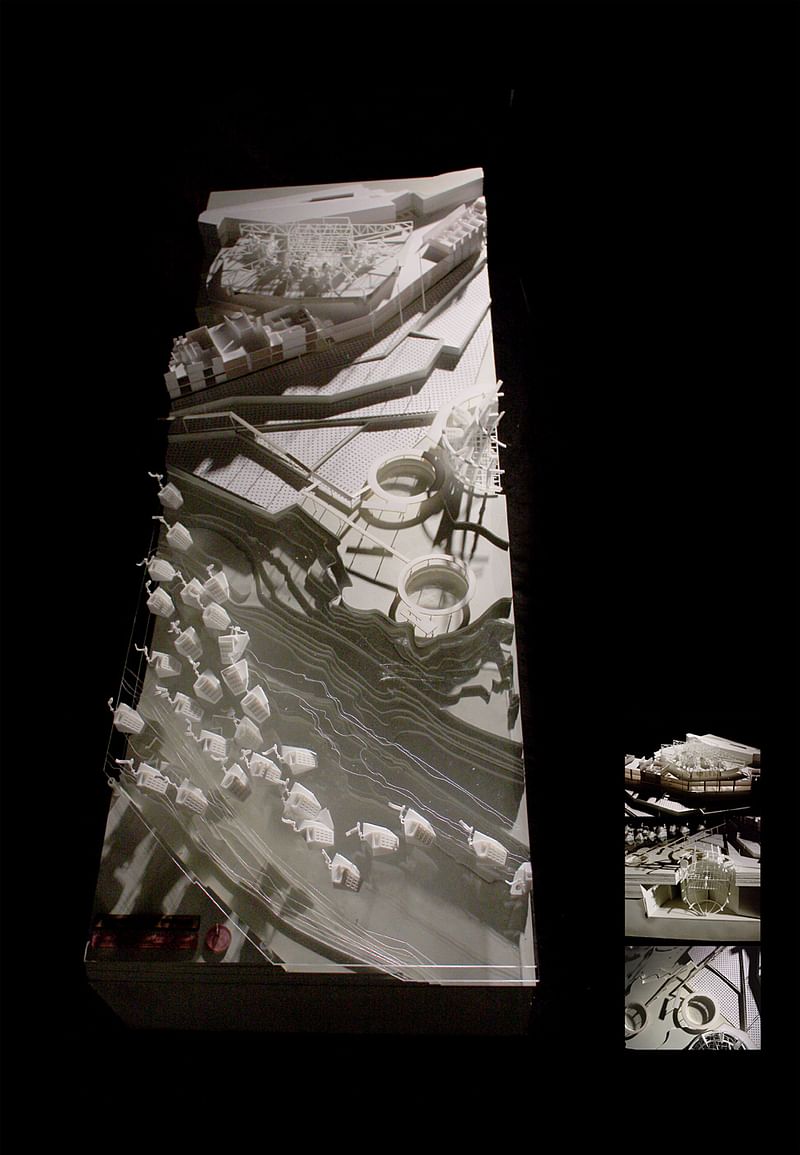The Bartlett exhibiting award-winning "Innovation in Technology" projects now until Jan. 31
By Bustler Editors|
Thursday, Jan 23, 2014

Related
To any of our readers in the London area, you can still get a chance to stop by The Bartlett's Innovation in Technology Prizewinners' Exhibition at The Lobby Gallery now until next Friday, Jan. 31. The event is free and open to the public!
The exhibition highlights five award-winning projects all by students in The Bartlett's BSc and MArch Architecture programs. Each project includes drawings, models, and prototypes that apply and develop technological innovation in architecture.
If you can't attend the event in person, you can catch a glimpse of the featured projects below
Superimposed Landscapes – Fragments of misperception, 2013
Andrew Walker, MArch Architecture Year 4, 2013, Unit 14
Winner of the Design Realisation Prize
"A series of prototypical experiments attempt to hack into the perceptual relationship between surface and navigation. Drawing upon cybernetic concepts of feedback and the programming of ‘Finite State Machines’, these experiments utilise coding, electronics, audiovisual technology and rapid digital fabrication techniques. Through mirrors, cameras and projectors the prototypes capture a site, distort it, and reproject (overlay) the space with a warped version of itself, creating blurred visual oscillations of constructive and destructive interference patterns."

MAMM Pavilion, Medellín, Colombia, 2013
Unit 22, MArch Architecture, Years 4 & 5,
2013 Winner of the UCL Sir Andrew Taylor Prize
"Created on location in Colombia, MAMM Pavilion is a primary structure employing several technological and environmental design strategies to minimise land occupancy, waste, energy consumption and carbon emissions. The building is designed to adapt to the changing weather and environmental conditions of the city of Medellín and all materials and techniques used in construction would be sourced locally, including indigenous wood and guadua (Colombian bamboo). On show are a series of visualisations illustrating the project."

3D Lenticular Façade, 2014
Matthew Lyall, BSc Architecture, completed 2013, Unit 1
Winner of the Making Buildings Prize
"This project looks to develop the potential of 3D lenticular technology, which is often used to create ‘holograms’ on novelty items and greetings cards, on an architectural scale. The technology is imagined as a façade system that would change appearance in relation to viewer position and, as such, simulate motion parallax. A model aims to address technically how this might be achieved. It also seeks to identify with the language of objects that support images (billboards, street-signage, television sets)."

PEMY (Pre‐Ecopoiesis Mars Yard), 2013
Sonila Kadillari, MArch Architecture, completed 2013, Unit 11
Winner of the Max Fordham Environmental Design Prize
"Through a series of drawings PEMY explores the topography, light and gravity simulations of the planet Mars in the terrestrial setting of Florida. A landscape reconstruction of Mars, PEMY uses a variety of scientific techniques to achieve the special environmental conditions of the planet. It functions as the main site for rover autonomous drive testing, temperature resistance and colour calibration, where the public can be exposed to and take part in a scientific landscape architectural instrument.
PEMY aims to be a self-sufficient landscape instrument that generates its own electricity, using energy from a star to enable the simulation of another planet. It uses a heliostat to follow the sun and secondary reflectors that manipulate the light to simulate light and temperatures of Mars, and solar ponds located in the central voids of selected craters for back up electricity and energy supply after sunset hours.
The project is a proving ground for a new type of architecture, creating a bridge between science and public interest."

The Reward System, 2014
Yoonjin Kim, BSc Architecture, completed 2013, Unit 0
Winner of the UCL Environmental Design Prize
"This drawing project imagines a near future London shocked by the depletion of fuel energy. In response to this catastrophe the councils of London start to monetarise energy. Energy now buys you everything you need. Residents of the city earn ‘carbon tokens’ by saving energy in their homes, then exchange these for locally produced food.
In response to this future scenario, and sited where the River Lea meets the Thames, a building is imagined as a new central hub for a London-wide agricultural cooperative. Members of the cooperative bring their produce to a weekly floating market, come to charge up batteries and collect free power in exchange for ‘carbon mileage’ earned by minimising the carbon footprint in their daily lives."
More details on the exhibition:
"Critical examination of technology and environmental sustainability is central to The Bartlett School of Architecture’s philosophical ethos and pedagogic agenda. Within the context of imaginative, speculative and visionary designs, technology subjects are explored in the broadest terms whilst they are supported by real and theoretical issues.
Bob Sheil, Professor of Architecture and Design through Production and new Director of the School of Architecture, explains: 'We believe that the issues should be explored philosophically, socially, culturally and politically, and fully integrated into design practice. This holistic ethos can be seen throughout the teaching structure of the school, where technology is fully integrated with design from concept to proposition, and both are explored as experimental and polemic subjects.'"
Images courtesy of The Bartlett School of Architecture.

Share
0 Comments
Comment as :